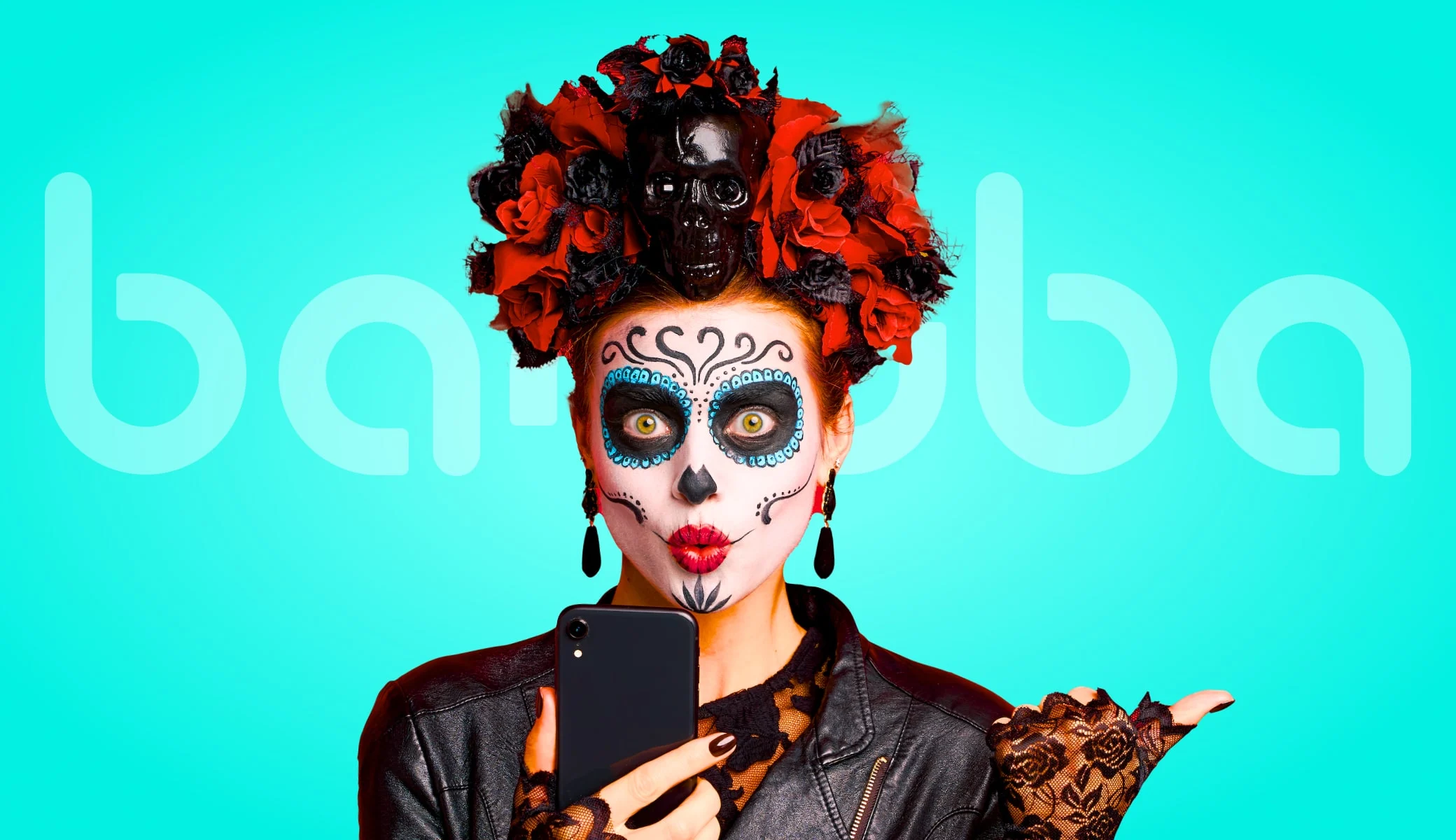Viktor Prokopenya invests in AR SDK – how Banuba advances camera experience

The investment company VP Capital, founded by IT entrepreneur Viktor Prokopenya, invests $5 mln in Banuba, a startup developing AR SDK for mobile apps.
Viktor Prokopenya has told what is now at the forefront of technologies and shared some useful insights about creating AR experiences.
Banuba Team. Photo by Andrey Davudchuk, dev.by
What makes Banuba a breakthrough IT company
Banuba's augmented reality SDK is based on neural networks and machine learning algorithms. The technologies detect and recognise objects, facial expressions and mimics in real time and provide different filters and video effects. It literally allows users to create magic as shown in this video or this one.
Viktor Prokopenya explains that there’s a great difference between augmented reality and image processing that, for example, Meitu and FaceApp provide.
Image processing is a funny thing but not really complex in its essence. To make videos that support AR effects in real time, an algorithm needs to process at least 30 frames per second. That’s 33 milliseconds per frame, all in real time. Implementing it on a phone is challenging — phones are at least twice as weak as computers.
According to Viktor, augmented reality today is mainstream, taken up by many corporations such as Google, Facebook, Microsoft, Apple, Pinterest, Snapchat to name but a few. The idea to create a startup that develops AR based mobile apps was on the surface.
Image source www.iguides.ru
Vadim Nekhai, CEO and co-founder of Banuba, shares that experts forecast the AR market might exceed the market for VR technologies (virtual reality) many times in just a few years. Today the situation seems to be the opposite, but the high growth rate of AR is simple to explain:
- AR needs only a phone
- VR requires additional devices
Although AR and VR may seem similar, there is a fundamental difference between them. VR immerses users into an artificial world that looks real. AR, on the contrary, complements the real world with some computer data to make user experiences more entertaining or useful.
What makes Banuba innovative?
Banuba researches and develops complicated computer vision technologies that process a video stream in real time. Developers call their products a technology showcase based on the use of a phone’s camera.
The potential of the camera is so great that all the market’s abundance that we’ve got today is just the beginning.
The camera becomes the most significant part of the phone
Viktor Prokopenya has described how the technology works in practice:
- Recognition. The application finds necessary objects in the frame of a video stream and takes their coordinates. Most development companies can implement this functionality.
- Adjustment of the image to a high level of quality. This stage is more complicated, and there are fewer companies in this segment.
- Tracking facial expressions, emotions, and movements. This stage involves the interaction of artificial intelligence with a human and provides multiple opportunities for monetisation. By "reading a face" (recognising facial expressions and understanding emotions), machines learn to understand humans. So far, specialists in this field are few and far between.
Image source: datareview.info
Banuba masters this technology on all three stages forming a technology portfolio and constantly advancing algorithms. The startup can boast 31 patent applications in the field of augmented reality and is planning to launch some interesting AR applications.
"Our technologies can change reality depending on what the camera sees at a given moment — objects, people and their number, or sound background. We recognise user emotions, age, gender, movements, and different positions of eyes, mouth, etc. You can apply various textures. The technology empowers companies in researching their audience at a deeper level. Integrated into social networks, it allows for the analysis and measurement of customer preferences based on their emotions rather than vague reposts. Used in cars, it can monitor the driver's condition and prevent falling asleep at the wheel, " – Viktor Prokopenya notes.
Image source i-look.net
There are so many things you could do with just your eyes, keeping hands free. A while back, controlling reality with the power of thoughts used to be a prerogative of science fiction writers. Today, a couple of companies are implementing this technology. Although, so far, it doesn't always work with 100% accuracy, it definitely has huge potential.
Back in 2013, Samsung announced Eye Scroll. This technology allows you to flip through browser pages with a glance when you reach the bottom of the page or dial a phone number by looking at the needed numbers. Eye Pause technology prevents photo shading when the user looks at it.
Among the top priorities — getting the best out of the phone
Another Banuba focus is algorithms' optimisation and training. Given the limited capabilities of smartphones and high resource intensity for augmented reality development, it's important to improve algorithms that can work on most existing devices.
Some of the team members at Banuba have been working in this field from almost the moment it emerged. They have no doubt that they'll squeeze the maximum out of mobile devices. Currently, the company employs 100 professionals.
Unlimited AR opportunities for monetisation
When it comes to the monetisation of Banuba’s products, Viktor Prokopenya has shared some examples:
- Focus around messengers of the next generation and provide "camera first" applications.
- Sell licenses for the AR SDK.
Another option is to allow users to make custom filters for free and charge companies for introducing their branded filters in the app.
Now Snapchat is making good money on this, however, they’re doing it for themselves. Making AR filters akin to AdSense (a free tool that allows you to earn money by displaying ads) opens attractive monetisation perspectives. Large corporations like Starbucks or Coca-Cola may be interested in promoting their brands with custom filters.
Other monetization options include selling filters as NFTs, virtual makeup try-on, using masks in video conferencing apps, and selling them for in-game currency.
Image source: snapchat-download.net
Imagine getting a video from a friend in which his/her head turns into a cup of Starbucks coffee. Cool, right?
The technology has already reshaped the world. What's next?
According to Digi-Capital's report, $2.3 billion was invested in augmented and virtual reality in 2016, which is 300% more than in 2015. Among the largest investors who acknowledge the importance of this area such names as Alibaba, Warner Bros., Google, Qualcomm, Fidelity, J.P. Morgan, Morgan Stanley, T. Rowe Price, Wellington, CIC, Intel, Amazon, CITIC, NetEase, Softbank, 21st Century Fox, MGM, Lenovo, Tencent, Comcast, Samsung, HTC and others appear.
By 2021 this amount can reach $108 billion, with three quarters coming just for augmented reality. AR experts predict the rapid growth of this new market.
The most popular and successful brands who implemented AR don't need an introduction:
- Pokemon GO became hugely popular and you only needed to collect virtual monsters with your phone.
- Google-translate can recognise texts from images.
- Google launched a custom version of the augmented reality system Tango where you can track the movement of any object, build a three-dimensional map of the surrounding world in real time, and link a variety of virtual objects to this map.
- The German-based company UBiMAX believes that production companies can increase their efficiency by 25% with the help of AR technologies. For example, in warehouses, sensors can monitor the routes and suggest the most optimal ones.
- Pinterest has launched an application that uses a phone camera to recognise physical objects and show related items from the Pinterest network.
- Apple takes much interest in augmented reality. Nobody knows for sure what will be Apple's "next big thing", however, Tim Cook continues to hint that the company sees huge potential in this technology.
- Such apps as Snapchat and MSQRD allow users to edit their photos by using different filters and masks.
- At the same time, investors estimate Snapchat, a company supposed to earn nothing ($ 200 million loss per year) — at $ 25 billion. Its IPO for $ 3-billion raise is considered to be the largest among tech companies in the recent years.
Image source cdn0. vox-cdn.com
The internet is brimming with examples of realised AR projects, and they are growing exponentially. The technology’s accessibility changes people's perception of life and makes it more comfortable, diverse and interesting. And this will be a significant factor affecting the growth of the market in the coming years — the next big thing we are about to see.

